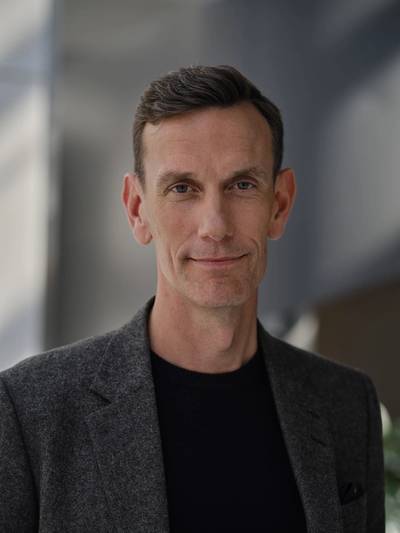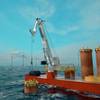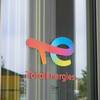Interview: Johan Inden, Volvo Penta
Johan Inden heads Volvo Penta’s global marine business unit as part of the company’s executive management team. “I have global strategy responsibility, global product responsibility, direct commercial responsibility for everything except North America; we have our own commercial setup with our local president there, Fredrik Högberg. Of course, we collaborate very closely, but we have in our DNA to be very close to customers, so we think we need a dedicated commercial organization in North America as well,” Inden said.
A civil engineer by training with financial degrees too, Inden has been with the Volvo Group for roughly 20 years, including the last eight years with Volvo Penta, the first four as CTO. Prior to joining Volvo Penta, he was the president of venture capital business Volvo Ventures, and is still very much focused on the “balance between technology and financing”. “It’s in my DNA to try to find how to accelerate development. How do we build an ecosystem between the small and the big, just to make everything go a bit faster or get better or move forward?” Inden said. “I still enjoy working with startup companies, looking at the new technologies, seeing how we can interact with them, how we can benefit from collaboration. I think collaboration is a very strong part of solving the challenges forward, building a better experience for the customer, doing the sustainability journey.”
Marine News caught up with Inden over breakfast in Svalbard (there’s a story there; check in next month to read it) for a discussion on market drivers, the shifting sustainability landscape and Volvo Penta’s role in all of the above.
How does the North American market compare to others globally? What are some of the key differentiators that lead Volvo Penta to separate it from the global business?
I would say that it’s not so much the structural difference that makes us run it that way. It is to make sure that we have both from engineering to executive presence with customers. We’d like to have very broad and deep touch points with the different segments we operate with, with the OEMs, with the dealer structure. It’s more a setup to make sure that we’re close to the business rather than it being a different business. So, we have engineering capability, we have purchasing capability, we have production out of Lexington, and then we have a management team for North America as well. We want to make sure that we are representing the full business there. It’s more to get close to the business, because when you’re close to the business, you understand it, you can make the right decisions, you can support the customers in the right way.
Where do you see the greatest opportunities in North America today?
We have a very strong historical position in the leisure marine market. Our stern drive’s been very successful over time, but that market has changed a bit due to outboards. So, looking at the full marine business, the opportunities are for sure on the commercial side where we see that we are growing. We see some of the sectors, like wind farm service vessels, CTVs being one of the sectors, where we have really been able to get a footprint. We have pilot vessels where we’ve been successful with the IPS. If you would look to those type of drive cycles, you need speed, you need maneuverability, you need efficiency, you need fuel efficiency, and you have an idea of how you want to progress that technology forward. That’s a good mix for us. Patrol, pilots, crew transfer vessels, passenger vessels, those are all sectors that we are monitoring closely.
But then, of course, we are in the tugs and the heavy equipment or heavy boats as well. And we do see a very strong opportunity on the genset side. Various speed gensets is becoming more and more of an opportunity when we see more serial or diesel electric solutions, when we start building this architecture of having electrically driven parts, you have a bank of gensets, you have a group of batteries, the type of setup that is pretty traditional in marine, in a sense, in bigger boats and in slower boats. What is interesting now is that it moves into high performance boats or boats that are run at higher speeds. That I think is the real opportunity for us as well.
How do you see the recent CARB harbor craft emissions rule changes in California, and how do they impact Volvo Penta?
Being part of Volvo Group, we have a ton of experience in advanced emissions aftertreatment systems, because as we know, marine is kind of coming in a natural sequence behind the passenger cars. It’s more or less always first out on the legislation, then you have commercial vehicles, then you have off-road vehicles, you have marine. We have already launched our IMO III solutions. We have advanced SCR solutions on the market today. And, of course, we see stage five solutions coming in Europe, et cetera. We are closely monitoring that. We have our development activities going. We’re learning a lot from our commercial peers in the Volvo Group on the technology side on what can we reuse, how do we need to adapt it, and how is it fit for marine use? I think it’s something that we will see just continuing. That evolution is very one directional. It will move forward, so we better get prepared. And I think we’re pretty well set up for that.
Fully integrated helm-to-prop propulsion systems have been a hallmark for Volvo Penta through the years. How do you see this evolving into the future?
It’s been a strength on our side for a few different reasons. First of all, as a customer, as a builder, you get a one point of contact for a large part or the entire part of the drivetrain. It means that you have a natural interaction with us across the build process, and even more importantly, when there is something wrong, because there will always be a service need or something. We can never pretend that everything will never break. Things break. When they do, we need to fix it. So instead of having multiple points of contact and trying to figure out who’s responsible for this challenge, we take the full responsibility. It’s our job to sort out where from prop to helm the problem is, and our service system is set up to handle that. That’s the first part.
The second part is that it gives opportunity to design the experience in an even stronger way. Out joystick system, for example, you can’t do that really without being able to tune all the parts in the prop to helm system, because it’s a visual part of it. It’s, of course, a steering and electronic part of it, but it’s also a drive efficiency part of it, and it’s how you engage the engine, et cetera. For us, that integrated system gives very strong responsibility and also an innovation platform. If I take that to the next step to hybrids or full electric systems, you will benefit even more from that, because then you have to be in full control of the entire driveline, and it will be even more of an integrated system with a new setup for your electronics, your power system, your power management, et cetera.
I think we bring a very strong DNA into that, and we’re well set up to be able to handle the next level of integration. And, of course, in our vision forward, it is to continue expanding that integration platform. We own Humphree, for example, interceptors and fin systems. We have our first product on the market, the Volvo Penta BTS, an interceptor, which is integrated into the system. But, of course, you can imagine how we can continue together with Humphree doing total stabilization while also running efficiency while also doing hybridization, just as a natural analogy of how we’re working.
Continuing on this path, you could soon be one step short of building the whole vessel.
We will never build the boat. That’s simple. But we will enable great boat building. That’s how I see it. It’s a very clear crossing of stepping into designing boats, building boats, et cetera. We’d like to be the pride of everything that goes in the boat, so to say.
How do you see the marine sustainability shift currently underway?
I think we’re in for a fantastic journey in the marine industry. I mean, we are very capable engineers in this business. From designers to operators, to yards, to propulsion suppliers, we’re used to delivering different kind of solutions, different size engines for different types of operation. I think with what is happening forward, we both have a great opportunity to continue levering that knowledge. And I think that if I would make any call out to the industry, it’s really let’s always explore what’s the next frontier, because we are very capable of getting that done.
And second, it is the responsibility to actually do that. We’re part of moving an industry. We think we can all subscribe to the sustainability journey and recognizing it’s not a binary shift. You don’t go from unsustainable to 100% sustainable. And you can always find arguments why someone else is not moving. But instead, we have a responsibility to lean forward. If I can solve my part, then someone else will solve their part and then we get that move and we can change this industry quite quickly, I think.
Earlier you mentioned marine’s parallel with the auto industry, and we can see how automotive is on track to maybe eventually remove gasoline engines from the picture. Do you think the marine diesel engine will always have a place in the industry?
I think the marine journey is different from passenger cars where the use case and technology supports are almost like a one-track road toward electrification. At least that’s how I perceive it without having deep insight. Marine requires much more of a portfolio approach. Some use cases are already today possible and are running full electric. Some need hybrids, at least for a while. We will need hybrid supported by gensets in the future where we need to look at different fuel options, so alternative fuels, green fuels. And the diesel engine will be, I think, the excellent platform for that, but it might run on HVO. It might run methanol. It might, in larger size ships, run ammonium. It might be hydrogen combustion, and eventually it might be a fuel cell powering it all.
In our charter forward, there is not a one-way road. We need to play with all these technologies. And here we’re talking hybrids and we’re talking batteries in the vessel, but are we doing as much to understand the alternative fuels option? I always pull up and say, “If you want to do something today, secure HVO and run with us.” We have a few commercial operators, but one which I know very, very well in Sweden, they do seabed monitoring. They switched completely to HVO100. It’s part of their brand, part of the way they market themselves, part of the way they operate their business. It’s a huge step forward. You’re seeing exactly the infrastructure they have in the boat, no tweaks to the engines, no new tanks needed, nothing but the access to the fuel. There are low threshold activities, and I think we need to remember that, that it’s not a let’s develop for 20 years and then wham, boom, it happens.











